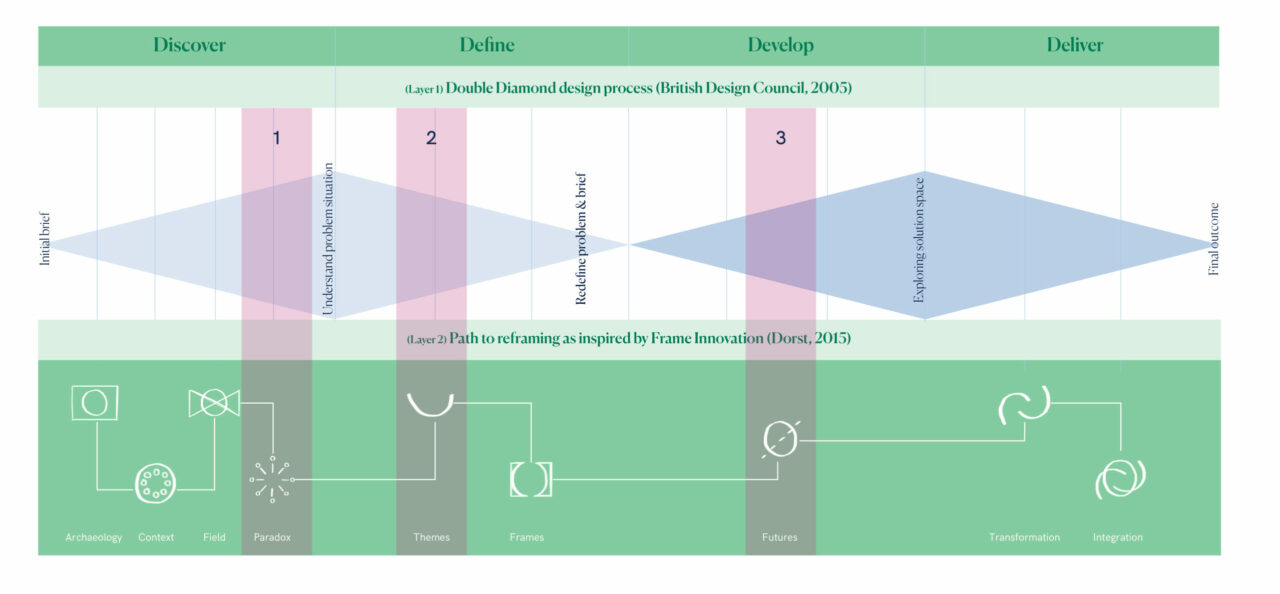Participation(s) otherwise: A view on paradoxes, themes and futures
PCM lab alumna Ashni Shah was invited to present at the Participatory Design Conference 2020, hosted in Manizales, Colombia. The paper titled “Design research for participatory policies: Paradoxes, Themes, Futures” discusses how a double-layered design approach can bring participatory design principles to the policy domain, illustrated by our experiences in a design project for the municipality of Delft, the Netherlands.
Participation(s) otherwise
The theme of the 16th Biennial Participatory Design Conference (PDC) was Participation(s) otherwise.
Participation(s) otherwise: What forms, conceptions and understandings of participation, collaboration, intervention, design and technology can we draw upon to contest essentialist views on participatory design? Are current conceptions coherent with plural understandings and realities? What haven’t we realized before? From whom else are we / can we be learning?
It was the first time PDC was held online and in South America, hosted by Universidad de Caldas, in Manizales, Colombia, in conjunction with their Festival Internacional de la Imagen 2020. Following the COVID-19 contingency plan, PDC2020 was using a mix of online platforms aiming for a configuration that can take advantage of asynchronous and synchronous activities.
This setup was a great example of participation(s) otherwise. Rather than traveling to Colombia, Ashni joined the conference from Delft. Being prepared by watching the video presentations beforehand, the live session created a meaningful dialogue with authors and participants.
The paper was presented during an explorative session within the theme “Joining”. The questions on the work presented revolved around the claim of “reducing the threshold of the (Delft) municipality to embrace participation”. Discussions on this touched upon the maturity of the context (the Netherlands), the way the municipality is structured and the existing policies and practices in place related to citizen participation.
During the plenary that followed, the discussions revolved around the topics of conducting participatory research in the west versus the global south, experiences gained and what we can do differently next time. Given the diversity of the presenters in the session, one of the main topics discussed was about how insights from such a project can help design educators change their approach and help students with capability building.
A big takeaway from this session has been a reminder to not be afraid to experiment with processes – use them as is, dissect them and use parts of it, or just create your own!

Design research for participatory policies: Paradoxes, Themes, Futures
In keeping with the participatory turn, the paper discusses how a double-layered design approach can bring participatory design principles to the policy domain. More precisely, the approach described is double layered in nature, comprising of the Double Diamond design process, which aims to provide structure to the process, while the inclusion of the Frame Innovation method, aims to provide inspiration. By engaging in a reflective practice, key learnings and insights gained from the implementation of the approach are presented, as well as conclusions and recommendations for the field of design research within participatory design.

The main learnings from the approach taken are illustrated in the paper as follows:
- The solution lies in the reframing of problem
It is no surprise by now that the problems that plague the world today are complex, dynamic and networked in nature and therefore a single lens approach to viewing a problem and finding a solution no longer seems to fit. As experienced during this project, reframing the problem helped identify that the real problem was not about helping the municipality to apply participation on their projects but about reducing their threshold of embracing it – a seemingly small but crucial difference.
- Experiment and own your process
It is important to remember that approaches and methods are mere proposals of procedures to follow and that they are not static or set in stone. The double layered approach followed on this project addresses this elasticity, as it is equally important to build trust in the skills and instincts one develops as a design researcher. For this reason, a combined approach was chosen so that both structure and inspiration could be derived, and this has enriched the type of insights retrieved.
- Trust in the value created during the process
As stated by many, the benefits of participatory design lie not in the outcome, but rather in the journey and findings uncovered during the process. Since participatory design is about including the needs of all the different stakeholders involved, it is important to remember that all inputs received are of immense value. During this project, insights generated by means of different tools borrowed from Frame Innovation helped to find rich and relevant insights, which can be used in future projects to support the municipality of Delft in integrating participation in their work.
If you are curious to know more about it, the full paper can be read here.
–
To cite this work please refer to it as follows: Devan Shah, A., Gonçalves, M., & Mulder, I. (2020, June). Design research for participatory policies: Paradoxes, Themes, Futures. In Proceedings of the 16th Participatory Design Conference 2020-Participation (s) Otherwise-Volume 2 (pp. 82-86).